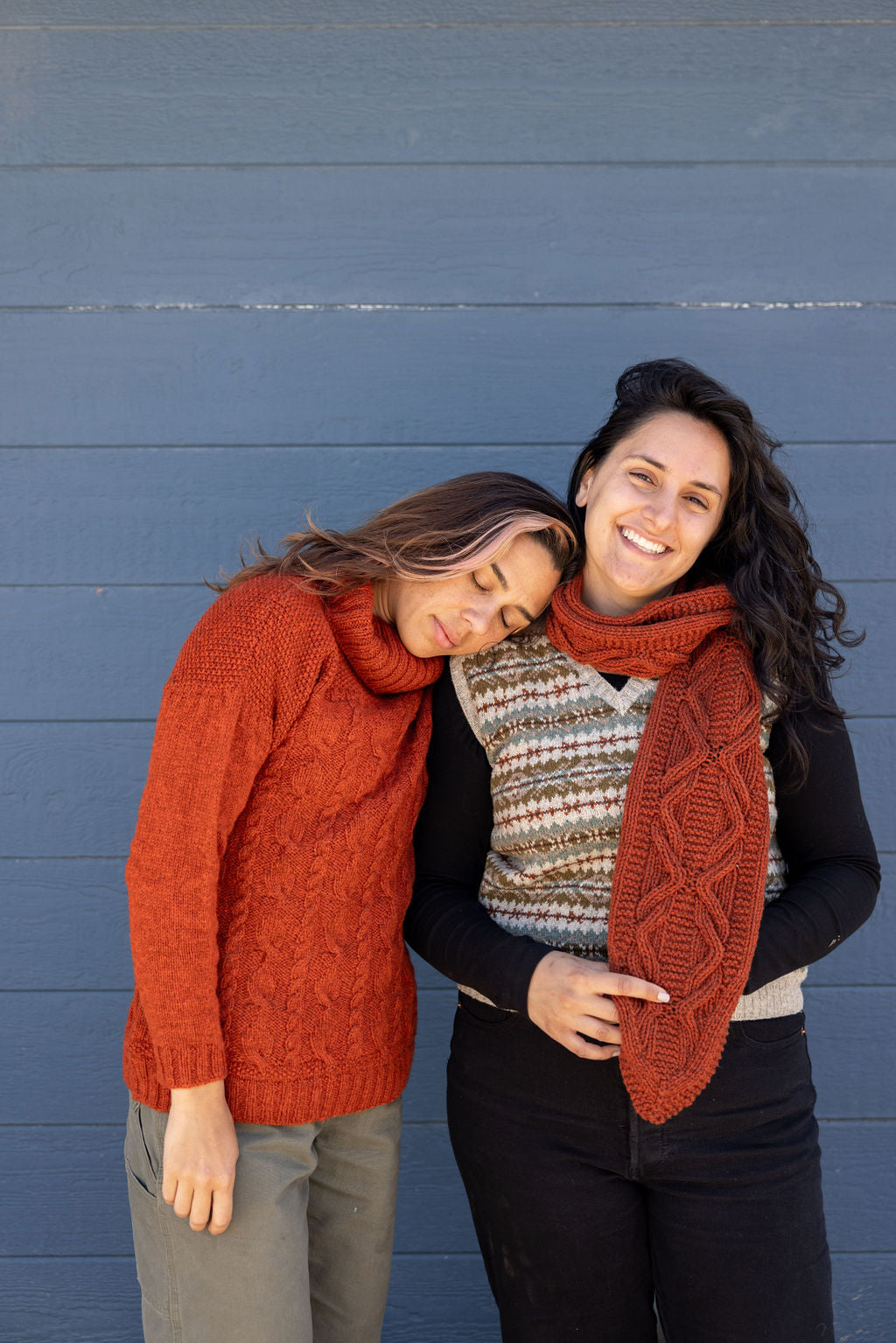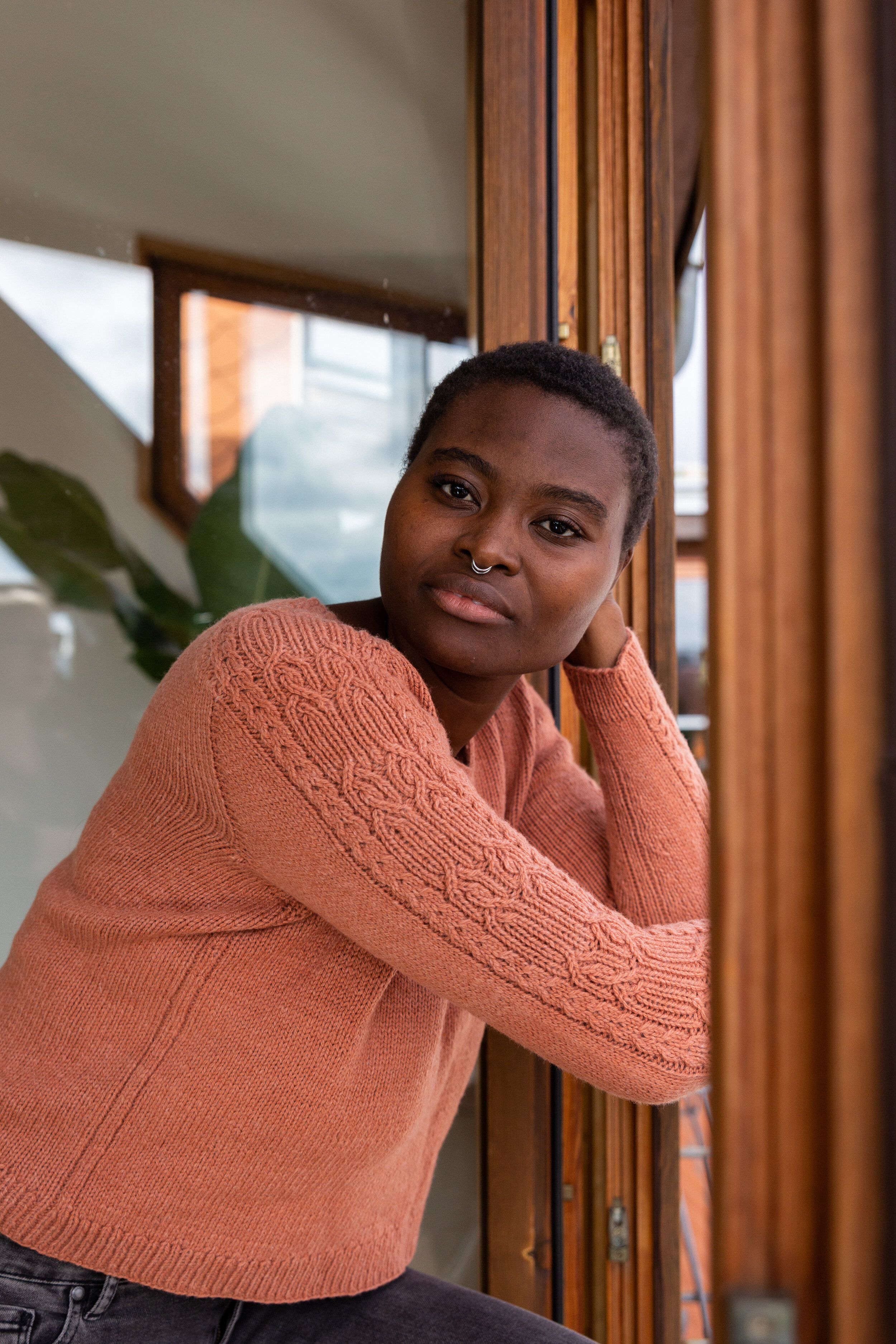As of April 1, Making Stories is closed. Thank you for your support all these years!
As of April 1, Making Stories is closed. Thank you for your support all these years!
Spinning Fiber
Notions & Gifts
Books, Magazines & Patterns
About Us
We're here to help you stitch sustainability into every aspect of your making.
With our carefully curated selection of non-superwash, plastic-free yarns and notions, we have everything you need to get started on your next project - and the one after that.
Here's to a wardrobe of knits we love and want to wear for years to come!
We're here to help you stitch sustainability into every aspect of your making.
With our carefully curated selection of non-superwash, plastic-free yarns and notions, we have everything you need to get started on your next project - and the one after that.
Here's to a wardrobe of knits we love and want to wear for years to come!

Our Sustainability Pledge

Our Blog

Our Podcast

The Making Stories Collective
What Is Drape?
July 16, 2021 4 min read

When it comes to the final fit and feel of a garment, there are lots of factors that come into play, but one that always seems a little elusive is drape. Drape can feel a little tricky to get your head around, but it's actually quite straightforward and we're going to break it down in this post. Getting to grips with what it means and, more importantly, what it means for your knitting, can help you reach the ultimate goal; a sweater you love!
So what is drape?
Simply put, it's the way a fabric hangs and moves, but more specifically with knitting, it's the way the stitches sit and move next to each other. That's the key to understanding drape. The more space there is between your stitches and the more they can slide against each other, the more drape your knitted fabric will have. Once you know what causes drape, you can start to understand why certain yarns will create a fabric that has more drape than others.
So how do you know which yarns will drape more than others?
We know that drape is affected by the stitches being able to move against each other, so smoother yarns tend to create a fabric with more drape. Let's look at some examples:
Worsted spun yarns
If woollen and worsted spun yarns are a new concept for you, let me give you a quick summary. It's all to do with how the fibres are organised before spinning. For woollen spun yarns, the fibres are left jumbled and haphazard, trapping air and creating a lofty, bouncy yarn. They tend to have shorter fibres that stick out and are a little fuzzy. With worsted spun yarns, the fibres are first combed so they are lying parallel to each other. This creates a much smoother and stronger yarn. Can you guess which typically has more drape? Worsted spun yarns create a fabric with much more movement as the stitches don't stick together as much as woollen spun yarns.
Check the fibresPlant fibres such as silk, linen and bamboo have a lot of drape, as does Alpaca. These fibres have less memory than wool and don't spring up as much. That's not to say though that wool can never drape. It just depends on how it's been spun (see above) and also the characteristics of the wool fibre being used.
A wool yarn with a fine or long fibre length can create a lovely soft and smooth yarn, whereas one with shorter fibres that feel fuzzier will usually have less drape. Those smaller fibres will cause the stitches to stick to each other more, reducing the movement between them. I go into yarn characteristics and how they can affect your knitting in greater depth here in a previous blog post if you are interested in reading more!
Superwash/Eco-wash yarnsYarns treated with superwash or eco wash treatments are extremely smooth. The whole point is that when the stitches rub against each other they can't felt, creating drape.
Don't forget about gauge
So we've talked about the smoothness of the yarn to allow the stitches to be able to move, but what about the space between the stitches? That is affected by our gauge. If you have swatched a particular yarn and feel the fabric is a little too stiff, you can create more drape by increasing needle size. This gives more space between the stitches so they can move a little more freely.
If gauge is a little bit of a mystery to you, we have a fantastic post written by Hanna Lisa called, 'Getting Gauge & What To Do When You Can't Get Gauge'. At the end of that post, she talks about aiming to create a fabric you are happy with, rather than always trying to force your yarn into the gauge suggested in the pattern. I think this is particularly important when it comes to drape, because it helps to be aware of how your yarn is going to behave once it is knit to be sure it's appropriate for the garment you are making.
While some projects will be lovely with some drape, others will benefit from having a fabric with more structure. Let's look at some examples:
Pale Shelter
Pale Shelter from Issue 3 uses De Rerum Natura Antigone, a 100% organic linen yarn. You can see from the photos that this fabric has a lot of drape and movement that works beautifully with the silhouette.
Twisted Vines
Twisted Vines from Issue 5 is knit in Echoview Fibre Mill Ranger Merino DK, a woollen spun yarn made from Merino and Rambouillet. It doesn't have a huge amount of drape, and the combination of stockinette and twisted stitches create a fabric with quite a lot of structure. This allows the clean lines of the pattern to shine giving a sharp, polished feel.
Acorn
Acorn from Issue 4 is knit using YOTH's Daughter, a woollen spun 100% US Rambouillet and Merino wool. You can see from the photos that the fabric has a lot of structure and that it looks light and bouncy. Any drape that you see is coming from the lace stitch pattern, which makes, in my opinion, a really lovely and interesting pattern and yarn pairing.
Acorn is a great example of how you can still use a yarn that has very little drape for a pattern that needs some. If instead of the beautiful lace pattern you see, Acorn had an all-over, chunky cable pattern, then we would probably have ended up with a fabric that was probably a little too stiff to comfortably wear as a shawl. The lace opens up the fabric and gives it room to move.
I really hope this post has helped with understanding drape a little better and given you some ideas of how to consider drape in your future projects. I'd love to how you approach using drape in your projects and if you have any tips you'd like to share. Let us know in the comments below!
Leave a comment
Comments will be approved before showing up.
Also in Blog

Issue 13 – Confetti & Rainbows | Official Pattern Preview
February 12, 2025 13 min read
Hi lovelies! The sun is out here in Berlin, and what better day to talk about one of the most joyful issues we've ever done than a brilliant sunny winter day – meet Issue 13, Confetti & Rainbows!
In Issue 13 – our Spring 2025 Issue – we want to play! Confetti and rainbows, unusually and unconventionally interpreted in 12 new knitwear designs – a journey through color, shapes, texture and materials.
Confetti made out of dried flowers, collected over months from bouquets and the road side. Sparkly rainbows, light reflecting. Gentle textures and shapes, echoing the different forms confetti can take. An unexpected rainbow around the corner, on a brick wall, painted in broad strokes.

New Look, Same Heart: The Story Behind Our Delightful Rebrand
January 16, 2025 4 min read 1 Comment
Hi lovelies! I am back today with a wonderful behind-the-scenes interview with Caroline Frett, a super talented illustrator from Berlin, who is the heart and and hands behind the new look we've been sporting for a little while.
Caro also has a shop for her delightfully cheeky and (sometimes brutally) honest T-Shirts, postcards, and mugs. (I am particularly fond of this T-Shirt and this postcard!)
I am so excited Caro agreed to an interview to share her thoughts and work process, and what she especially loves about our rebrand!

Thoughts on closing down a knitting magazine
November 19, 2024 12 min read 1 Comment
Who Is Making Stories?
We're a delightfully tiny team dedicated to all things sustainability in knitting. With our online shop filled with responsibly produced yarns, notions and patterns we're here to help you create a wardrobe filled with knits you'll love and wear for years to come.
Are you part of the flock yet?
Sign up to our weekly newsletter to get the latest yarn news and pattern inspiration!
















